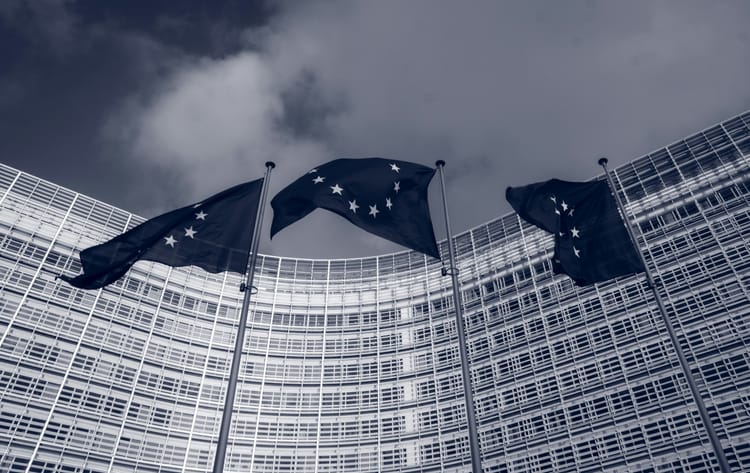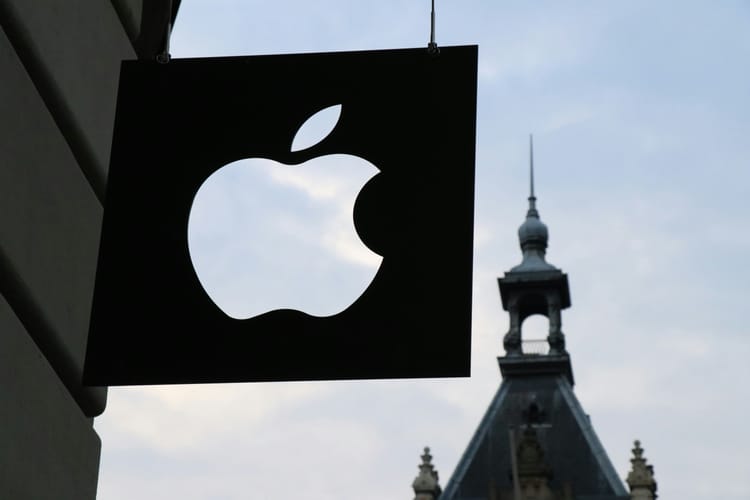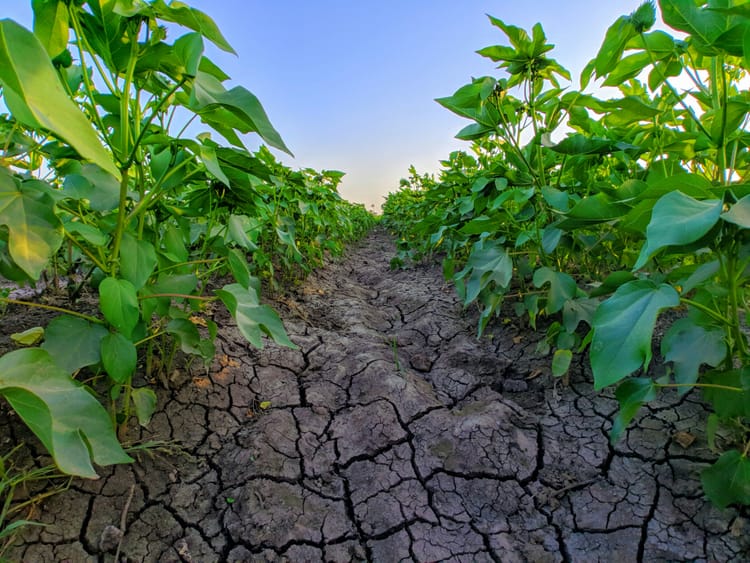With regenerative agriculture pledges, food sustainability leads have their work cut out for them

Many leading companies in the food industry have announced plans to roll out regenerative agriculture practices in their supply chains, but a lack of common definition and early profitability losses will complicate the work of those leading the transformation.
Climate change resilience is one of the top challenges facing global food systems today. Already, severe weather events are disrupting agricultural cycles and outputs and increasing the risk of plant diseases.
Before 2040, corn yields could decline by as much as 20% because of changing weather patterns, with “severe implications worldwide”, according to NASA climate scientists.
For the companies leading this sector, the priority is to ensure food security on a warming planet. “The more we see the severe implications of climate change, the more for food companies, this becomes a question about resilience and security of supply. In all my conversations with large corporates, yes, of course, sustainability is important and it's good for the planet. But it is even more important, particularly as you think about human food, for security of supply,” says Boston Consulting Group’s Anastasia Kouvela.
Regenerative agriculture is emerging as a solution to both climate disruption and food security challenges, with positive long-term returns on investment for everyone involved – though there are significant caveats.
What is regenerative agriculture
Regeneration International, a non-profit organisation dedicated to the promotion of regenerative agriculture, defines it as “farming and grazing practices that, among other benefits, reverse climate change by rebuilding soil organic matter and restoring degraded soil biodiversity – resulting in both carbon drawdown and improving the water cycle”.
Regenerative farming practices can include soil restoration through cover crops, manure and crop rotation, minimum tillage to limit soil aggression, and the use of well managed grazing animals to improve soil fertility. Under the principle of “doing no harm” to the land, regenerative agriculture, regenerative agriculture also strictly limits the use of chemical inputs like fertilisers and pesticides.
In 2021, PepsiCo was one of the first to commit to scaling regenerative practices across its entire agricultural footprint. The company’s pledges are indicative of the potential of regenerative agriculture in transforming global food systems: with this programme, PepsiCo hopes to eliminate 3 million tonnes of greenhouse gas emissions by 2030, improve the livelihoods of more than 250,000 people in its agricultural supply chain, and sustainably source 100% of its key ingredients.
Since then, many others have followed, including Nestlé (which is aiming to source 50% of its ingredients this way by 2030), and Mars, which recently launched a Net Zero Roadmap that includes “working with farmers on regenerative agriculture”.
Even commodity trader Bunge has deployed a programme to develop regenerative agriculture practices in Brazil, “at no cost for farmers”.
“Through regenerative agriculture, you do get a significant reduction in carbon emissions, but most importantly, you do it for reduction in volatility. So the healthier the farm, the less volatile it is, and therefore, you can plan a lot better: the soil is healthier, you have a much more stable yield, and then you also have better security around the supply of the volumes that you need,” Kouvela tells CSO Futures.
But there are a number of challenges ahead for Chief Sustainability Officers and the teams charged with implementing these practices.
The business case for regenerative agriculture
In recent years, studies have managed to prove the business case for regenerative agriculture. For example, this May 2023 analysis of Kansas wheat farmers’ transition to regenerative practices found that the 10-year return on investment was in the range of 15% to 25%.
Conducted by BCG and the OP2B coalition for the protection of biodiversity, the study also proved that the more advanced the practices, the better the outcome: “As farmers grow more comfortable with their [basic-intermediate] practices, they can begin incorporating additional advanced regenerative actions, which have the potential to grow their profits as much as 120% above those expected for conventional farming systems,” the report says.
Kouvela, who leads BCG’s consumer products operations and climate efforts in EMEA, LATAM and Africa, explains that this increased profitability is driven by a yield increase, “because the farm is healthier and can better sustain water”, but also because the farm is then “relieved from a very important cost, which is nitrogen based fertilisers.”
The only problem is that it takes time to achieve this outcome: in the Kansas study, farmers saw profits dip by an average of 30-60% in the first three to five years. This means food manufacturers cannot simply request that their suppliers switch to regenerative farming: they must provide (financial) support, which can come in different forms.
Regenerative agriculture: investment trade-offs needed in the short term
Among the initiatives Kouvela has seen companies deploy are public-private partnerships to help farmers access funding – this is the case of Walmart and General Mills, which together are funding the adoption of regenerative agriculture on 600,000 acres of land through grants administered by the National Fish and Wildlife Foundation.
Long-term purchasing agreements can also support farmers in giving them business certainty and helping them get loans. It is one of the strategies employed by PepsiCo, whose Chief Sustainability Officer Jim Andrew wrote in September: “Long-term agreements that incentivize and support sustainable transformation can be a great catalyst.”
Finally, Kouvela says some companies offer a premium for products grown through regenerative practices, which can help offset transition costs.
Of course, all these initiatives have a cost, and she admits that getting buy-in is “not straightforward”, since they require “trade-offs between investment decisions”.
“If it's looked at in isolation, obviously you could see it as a cost. It has to be at the core of the business strategy: it needs the right governance around it, it needs the right funding mechanism. And it needs a slightly more mid to long-term mindset. If sustainability is bought in the context of resilience of supply, then the conversation is a very, very different one,” she adds.
Lack of common definition can lead to confusion – and abuses
One of the other issues Chief Sustainability Officers in food companies are facing is that, despite a set of commonly accepted principles, there is currently no official definition for regenerative agriculture. This could create some confusion when it comes to applying these practices across global supply chains.
Orson Acosta Romero is the co-founder of Azolla Projects, a Barcelona-based company helping large food and drinks businesses set up “regenerative insetting intervention projects” – that is regenerative farming practices to reduce and absorb GHG emissions within their supply chains.
He believes certain companies may be surfing on the popularity of the term, but many have a limited understanding of it, focusing purely on its potential to reduce and absorb emissions. “There are big companies making big announcements but when you go a little deeper, many go little further than adding mulch to the soil or reducing tilling. Regenerative agriculture is a holistic vision where you have to take everything into account,” he tells CSO Futures.
A recent report by the World Benchmarking Alliance found that just 6% of the world’s major food and agriculture companies have a time-bound commitment to eliminate deforestation and only 2% understand their wider impact on nature. Regenerative agriculture pledges are a chance to enact concrete changes not just around carbon emissions, but also nature, biodiversity and people in food supply chains.
Of course, this lack of clear definition can also open the door for abuses. “When something becomes fashionable, the good thing is that people learn about it, and the bad thing is that there are many false claims and greenwashing. It happened with sustainability, and now it’s happening with regenerative agriculture,” Acosta Romero explains.
This is leading companies like chemical giant Bayer Monsanto to try to sell the role of glyphosate, a highly polluting herbicide and proven carcinogen) in regenerative farming – a dangerous oxymoron. (In this interview with Spanish publication EFE, Bayer Crop Science Director Rodrigo Santos says: “Glyphosate is a very important tool for direct sowing in regenerative agriculture.”)
A holistic approach will require CSOs to ‘embrace complexity’
In trying to roll out regenerative practices across their supply chains, sustainability and procurement managers will need to be very intentional about what these practices are.
Acosta Romero encourages companies to “embrace complexity”. “In such a globalised system with delocalised production and very centralised distribution chains, I believe that one of the biggest challenges that this system has is precisely to shorten these supply chains and return to more local models,” he adds.
That will involve breaking down cultural barriers with consumers (at least in the Global North) having grown accustomed to getting access to all types of foods at any time of year – and at a very low cost.
However, the Azolla Projects founder wants to debunk the “myth that regenerative agriculture could not produce the same amount of food and support a growing population”: he reminds readers that the current agricultural model is producing food that is increasingly low in nutritional density, causing malnutrition and obesity. A true regenerative model would increase the nutritional value of food and encourage consumers to change their eating habits.







Member discussion